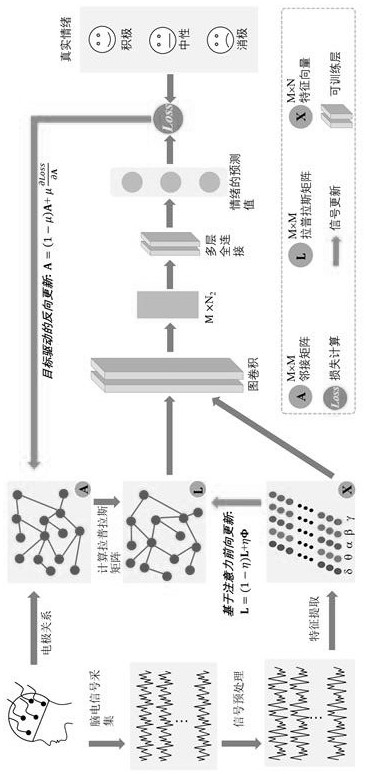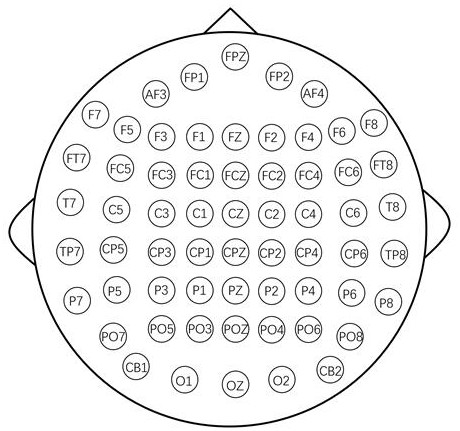Electroencephalogram emotion recognition system based on learnable adjacent matrix
An adjacency matrix and emotion recognition technology, which is applied in the field of EEG emotion recognition, can solve problems such as models that consume a lot of time, and achieve the effects of convenient construction, improved emotion recognition effect, and low learning difficulty
- Summary
- Abstract
- Description
- Claims
- Application Information
AI Technical Summary
Problems solved by technology
Method used
Image
Examples
Embodiment Construction
[0035] Such as figure 1 with figure 2 As shown, an EEG emotion recognition system based on a learnable adjacency matrix includes the following steps:
[0036] Step 1. Data collection, processing and division: convert the collected EEG signals per second into M×N feature data matrix X∈R M×N , where M is the number of brain electrodes, and N is the number of segments in the frequency band; the data is divided, and a part of the data is used as a training set, and the other part of the data is used as a verification set.
[0037] In this embodiment, the specific process of data collection is as follows: the subject wears an EEG collection device, watches a video that can arouse different emotions, collects the corresponding EEG signal while watching the video, and performs an evaluation of the obtained EEG information. Noise reduction, preprocessing, feature data extraction. The EEG signal acquisition equipment adopts the 64-lead EEG acquisition equipment of NeuroScan Company...
PUM
 Login to View More
Login to View More Abstract
Description
Claims
Application Information
 Login to View More
Login to View More - Generate Ideas
- Intellectual Property
- Life Sciences
- Materials
- Tech Scout
- Unparalleled Data Quality
- Higher Quality Content
- 60% Fewer Hallucinations
Browse by: Latest US Patents, China's latest patents, Technical Efficacy Thesaurus, Application Domain, Technology Topic, Popular Technical Reports.
© 2025 PatSnap. All rights reserved.Legal|Privacy policy|Modern Slavery Act Transparency Statement|Sitemap|About US| Contact US: help@patsnap.com



